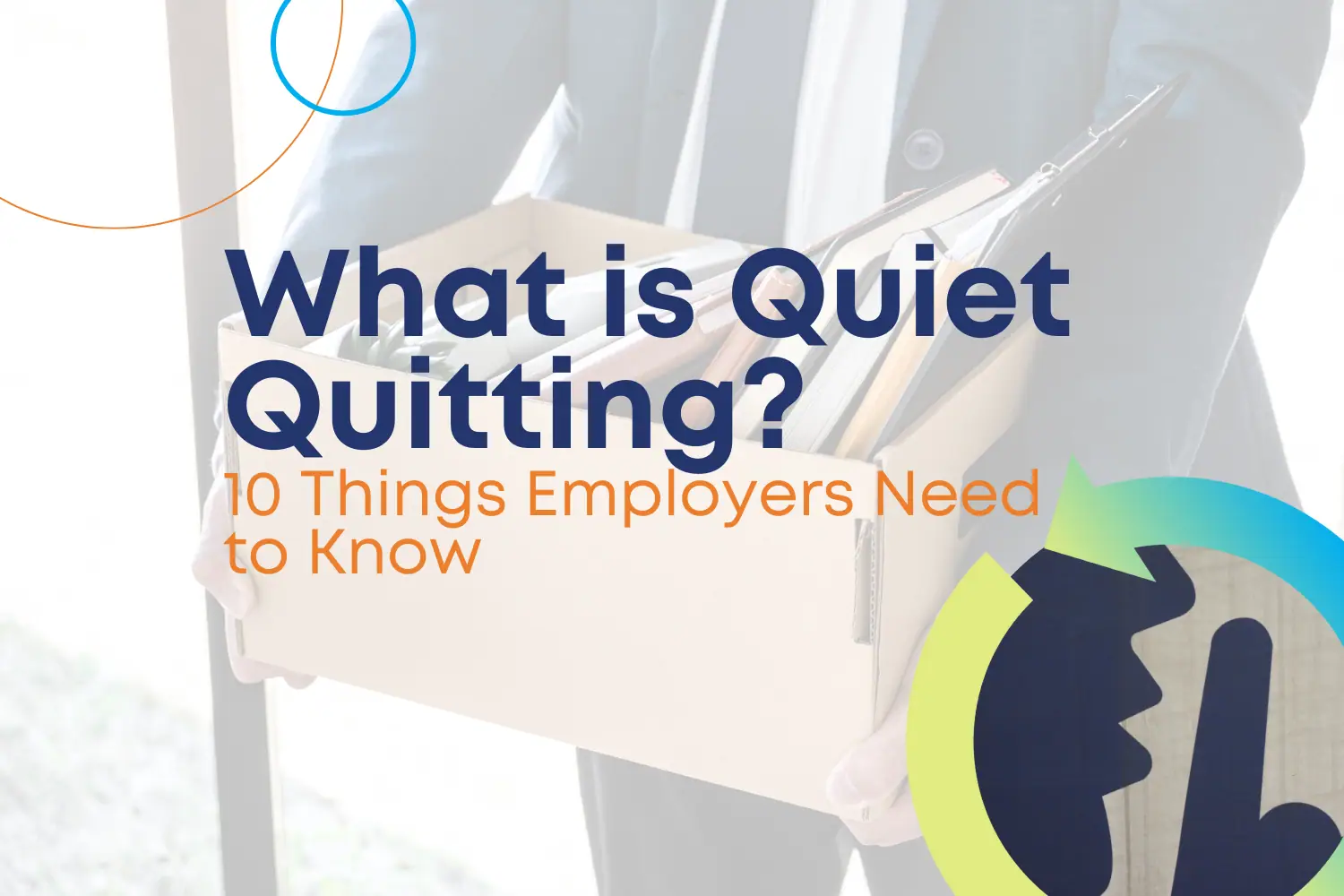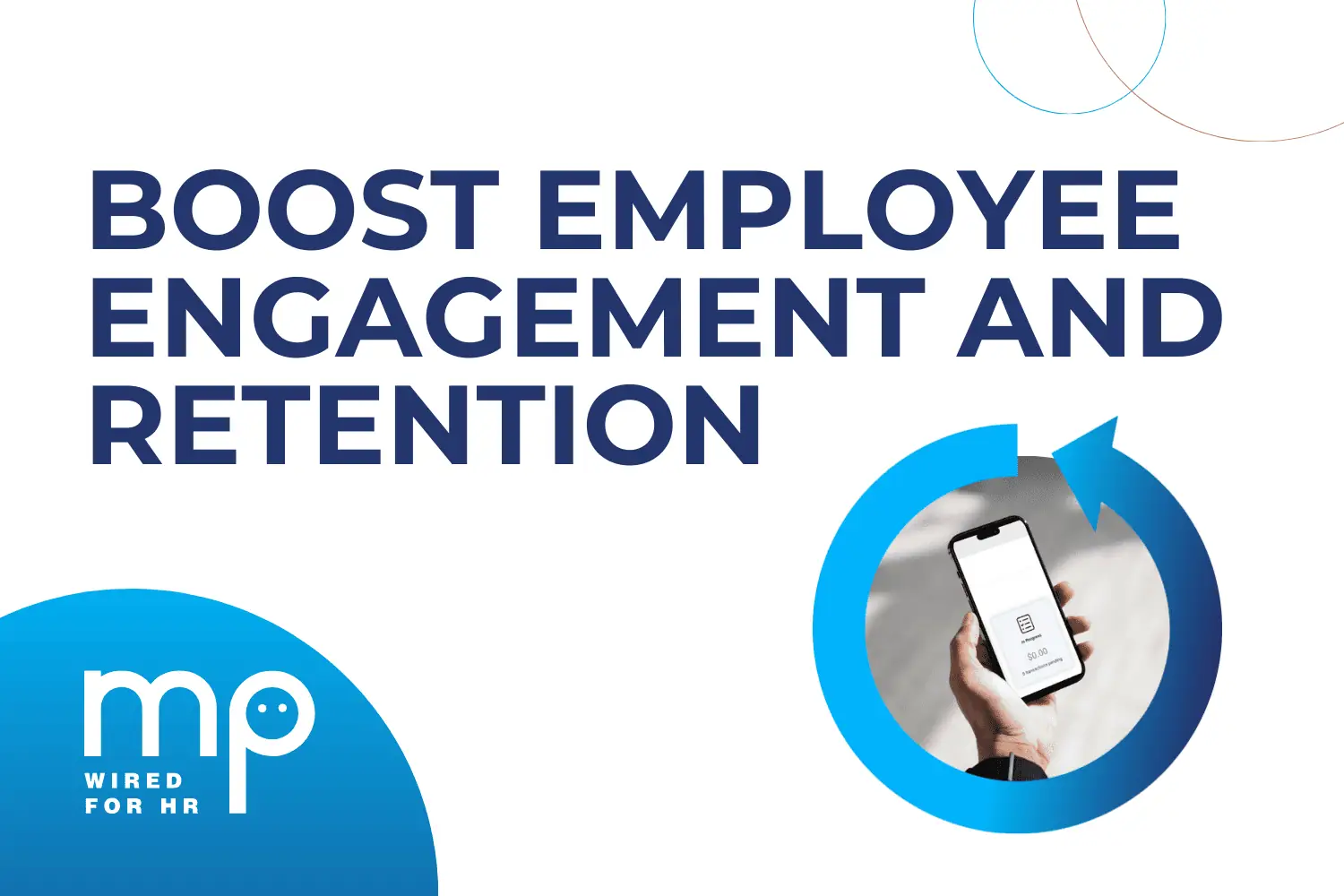Preventing Employee Turnover: Top 12 Questions and Answers
December 20th, 2021

Preventing employee turnover is a high priority for all employers right now. Many workplaces have questions about the optimal strategies to lower turnover rate, handle disengaged employees, and hire and recruit in 2022. MP’s HR services team shares answers to the top twelve questions about reducing employee turnover.
Offering Strong Benefits Packages
1. What benefits should employers offer their remote team or candidates?
Offerings to attract and retain remote employees include:
- Mental health benefits (such as access to counseling services)
- Health benefits (discounted gym memberships, discounts for equipment, discounts to programs like Peloton)
- Financial benefits (especially ones that go beyond 401(k)s or FSA)
- Small stipends for updating or optimizing their workspace
In addition to a comprehensive benefits package, employers should consider actions that will help their remote employees “unplug.” They could offer options such as more breaks, flexible schedules if possible, autonomy to schedule their days, etc.
2. What types of benefits could employers offer part-time employees?
Employers could offer similar benefits to part-time as offered to full-time employees, including PTO packages, health insurance options, parental leave, etc. Employers could reduce the accrual rate to be proportionate with their hours.
Hiring New Talent
3. What are some creative or nontraditional ways to recruit new talent?
Some employers are offering robust financial benefits packages. These include items such as:
- ID theft protection
- Student loan repayment programs.
- Training (especially remote) on topics like debt reduction, asset management, or saving for future needs (retirement, buying a home, childrens’ education, etc.)
Other employers are offering nontraditional benefits, such as:
- Pet insurance
- Unlimited vacation
- Expanded childcare options
- Expanded parental leave programs
4. What are tips for onboarding new (especially remote) employees?
Employers should remember that onboarding is optimally not a short process. It should take around a year of training, checking in with the employee, and ensuring they find their place in the company culture. Employers will have a higher retention rate if they dedicate themselves to a thorough onboarding process, especially with remote employees.
Utilizing Employee Retention Strategies
5. What is the best approach to offering sign-on bonuses?
If employers offer a sign-on bonus, they should set the terms in writing and share them with the recipients. These terms should include applicable taxes to be held. The sign-on bonus amount should reflect the hiring needs and the position. To increase retention, employers may choose to pay out the sign-on bonus in timed increments, such as at the 6 month or one year mark.
6. If an organization is flat and opportunities for advancement are limited, what strategies will improve employee retention?
Providing training is an excellent tactic for employee retention, even if there aren’t opportunities for advancement. Employers should offer employees stipends to take courses and learn new skills. This tactic will also enhance performance. (Employers may also consider utilizing training software, such as MP’s Learn and Grow.) Another tactic to improve employee retention is to utilize employee surveys and employee stay interviews. These will uncover areas of the organization that could improve.
7. How should an employer approach job-sharing?
Employers should consider these tips:
- Be mindful of the workload that your employee will be taking on, especially if you don’t increase their compensation.
- Frame job-sharing as an opportunity for professional development and learning new skills.
- Use job-sharing as an opportunity to build connections and collaboration across teams or among employees who wouldn’t typically work together.
Keeping Remote Employees Engaged
8. What can employers do if they’re losing more remote employees?
Employers can take these actions to improve employee retention in their remote workforce:
- Prioritize preventing silos. Ensure employees and teams feel like an essential part of the company and their work contributes to the larger company goals.
- When possible, encourage cross-collaborations with team members.
- Managers should check in with their team members more frequently, both in a team setting and on a one-to-one basis.
- Hold virtual teambuilding events and activities. A company that professionally organizes virtual events could conduct these activities. Alternatively, employers could also use Zoom to host their own casual social events.
- Employers could praise and highlight employees and their achievements in all-team meetings, newsletters, or other public forums.
9. How could employers encourage more connections between their remote employees?
Employers should note that virtual events are more tiring for people than in-person. If they set up a virtual social event, they should consider making it about half the time an in-person event would run. Employers should consider having virtual social events slightly more frequently than they would hold in-person ones. This frequency is beneficial because remote employees aren’t able to interact together as often as teams who work in an office. Many companies are offering professionally-hosted virtual teambuilding and social events. It’s important to note that sometimes making connections with teams isn’t just about concerted social events. It’s also critical for managers to check in more frequently with their team and even build in a few minutes for small talk in every meeting.
Best Practices for Handling Unhappy Employees
10. How should employers act if they suspect one employee is disgruntled and is impacting the team?
Employers should address this issue immediately. They should discuss with the employee exactly why they’re unhappy. Depending on the situation, a manager may want to use questions for stay interviews.
11. Should an employer offer a counteroffer to employees who give notice?
Generally, no. If an employee prepares to leave, it’s a best practice to allow them to depart. Research shows that when employees accept a counteroffer, they often aren’t at that same employer even a year later. There are some exceptional cases when a counteroffer may make sense, but these are rare. If employers are still considering offering a counter-offer, they should examine the reasons the employee looked elsewhere. They should ensure the employee was motivated solely by something they can provide, such as higher compensation, benefits, etc.
12. When inflation is high, employees complain about their raises not being high enough. What can employers do to mitigate this?
If employers can’t offer more competitive raises or pay, they should consider other, more cost-effective options. These might include:
- An extra day of PTO
- Remote work options
- Mental health days
- A small stipend to improve their remote workspace
Recent Posts
- Part 2: Speak Their Language — How to Win Buy-In From the C-Suite
- Part 1: Stop Playing Defense — How to Position HR as a Business Driver
- Built for Your Industry: Why Industry-Specific HCM Solutions Deliver 3x Better Results
- Fortune 500 Power + Personal Touch: How Smart Companies Get Advanced HCM Technology Without Losing Human Connection
- Part 3: Leave Laws & Benefits — What’s Changing Under the BIG Beautiful Bill
Categories
- ACA (10)
- AI (6)
- BizFeed (6)
- Business Strategy (120)
- COBRA (5)
- Compliance (244)
- COVID-19 (92)
- Diversity (12)
- eBooks (19)
- Employee Engagement (33)
- Employee Handbooks (24)
- ERTC (29)
- FFCRA (7)
- HR (310)
- MP Insider (13)
- Payroll (166)
- PFML (9)
- PPP (24)
- PTO (5)
- Recruiting (54)
- Remote Work (39)
- Return to Work (32)
- Unemployment (1)
- Wellness (22)
Archives
- November 2025
- October 2025
- September 2025
- August 2025
- July 2025
- June 2025
- May 2025
- April 2025
- March 2025
- February 2025
- January 2025
- December 2024
- November 2024
- October 2024
- September 2024
- August 2024
- July 2024
- June 2024
- May 2024
- April 2024
- March 2024
- February 2024
- January 2024
- December 2023
- November 2023
- October 2023
- July 2023
- June 2023
- May 2023
- April 2023
- March 2023
- January 2023
- December 2022
- October 2022
- September 2022
- August 2022
- July 2022
- June 2022
- May 2022
- April 2022
- March 2022
- February 2022
- January 2022
- December 2021
- November 2021
- October 2021
- September 2021
- August 2021
- July 2021
- June 2021
- May 2021
- April 2021
- March 2021
- February 2021
- January 2021
- December 2020
- November 2020
- October 2020
- September 2020
- August 2020
- July 2020
- June 2020
- May 2020
- April 2020
- March 2020



